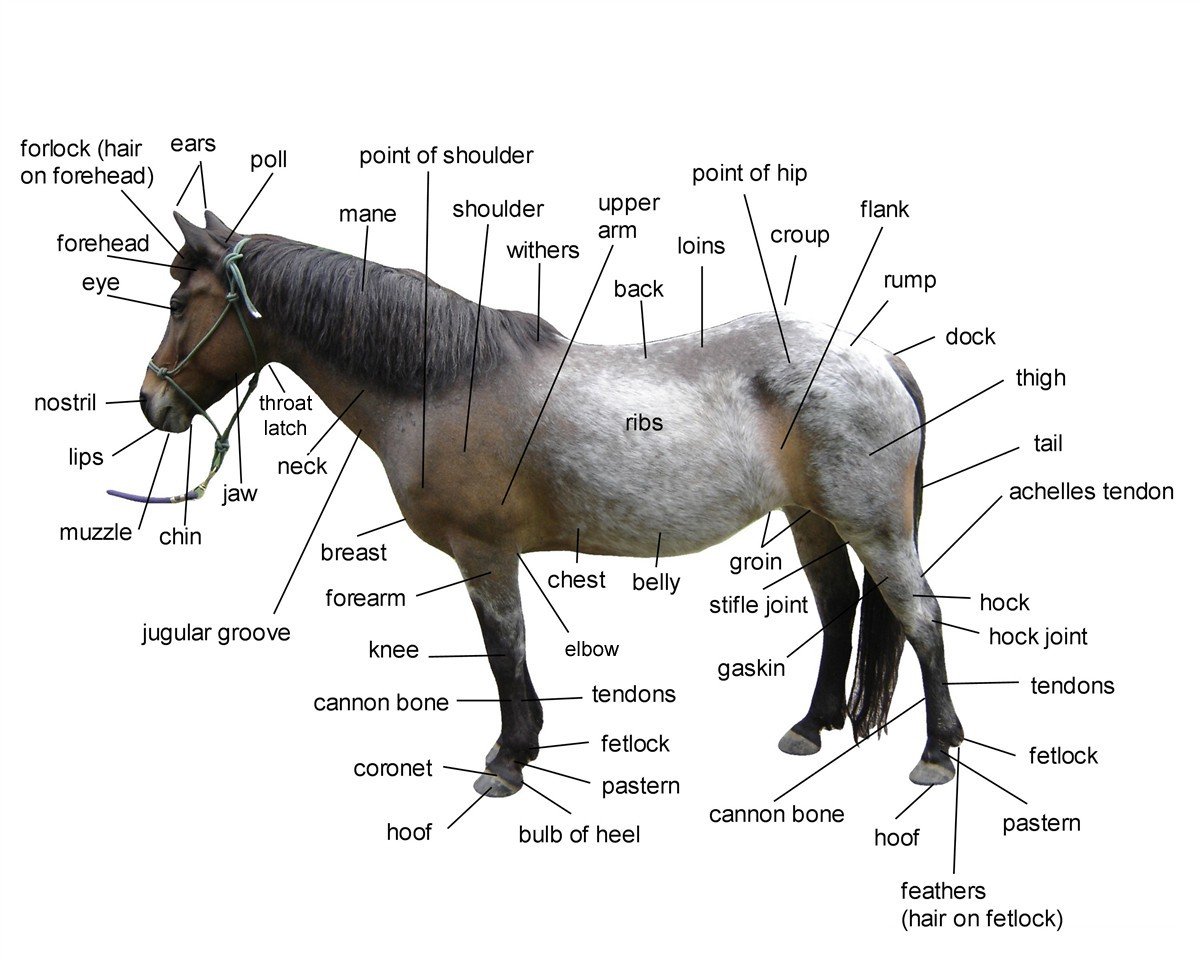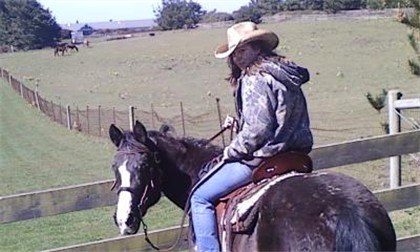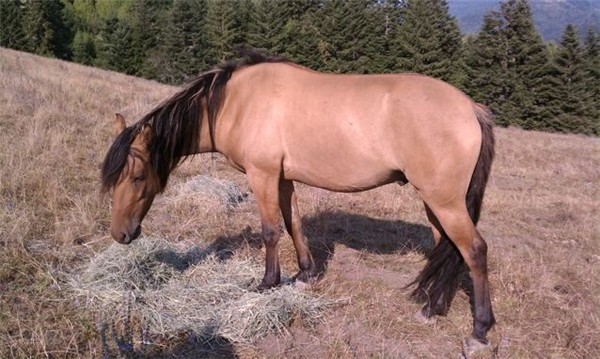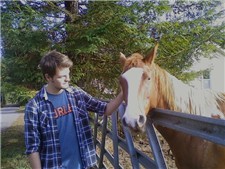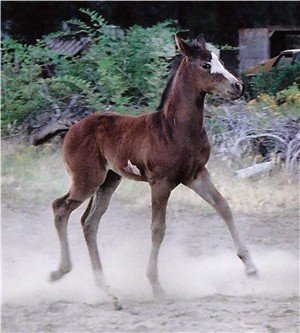Diagram of Horse Body Parts
Points of the Horse and Pony
Learn the names of horse body parts with our adorable little model, Cherokee. She is 12.2 hands tall.
Think you know the parts of a horse? Scroll down this page to take the body parts quiz!
Horse Body Parts in Action
The hoofs do more than just support the horse. They act as a sort of pump as well. The bottom of the hoof is hard to the touch yet flexible enough to ‘give’ when the horse walks. With each step the horse takes, the blood that has been forced down the leg is now forced back upward toward the heart.
The front legs of the horse bear most of the horse’s weight, while the powerful back legs act as the motor that drives the animal forward. Horses carry the weight of a rider on their backs just behind the withers. A saddle helps distribute the weight evenly over the weight bearing ribs. If the saddle is improperly set too far back toward the horse’s loins, the horse will get sore and not perform well.
The tail of a horse is used quite effectively as a fly swatter, but did you know that horses use their tails to communicate as well? Much like white tail deer, horses will raise their tails when they are very alert. They also hold their tails high during mating season to help attract the attention of a mate.
What's Your Favorite Horse Body Part?
For some it's the soft velvety muzzle. For others it has to be those big brown eyes. Me? I love those long lovely legs!
Did you know that wide set eyes allow equines to see almost 360º? This is helpful to avoid predators. They have two blind spots, one directly in front of their nose/face and the other, directly behind their head. That is why many horses will pull away when you reach out to touch their forehead. You are entering their blind spot. It’s always a good idea to speak as you approach a horse, and approach them from the side. This way you know the horse can see you approach with out being startled.
A funny thing about horse body parts: The whiskers on a horse’s muzzle allow the horse to feel things with their nose before they bump into it because a horse can not see an object directly at the end of their nose.
Horses do a lot of talking with their ears. Ears perked forward show attention to something up ahead. Ears pointed toward the rider shows they are paying attention to the rider. Ears sagging down show relaxation and ears pinned flat to the head show fear or anger.
Ponies and horses are very athletic animals and just like human athletes they can get ‘work’ related injuries. These types of injuries usually involve joints and ligaments. Knees, stifle joint, the hock, cannon bone, fetlock and pasterns are all subject to a lot of stress on hard working horses.
Proper hoof care, good exercise management and good conformation (how the horse is built) all play a factor in how well a horse will hold up to strenuous working conditions.
Knowing a bit about equine anatomy is helpful for beginners just learning about horses and it is essential for people that own horses. When someone says, “That horse will buck if he gets a boot in the flank,” you’ll be grateful to know your horse body parts!
Other Equine Topics You May Enjoy
Horse Hoof Anatomy
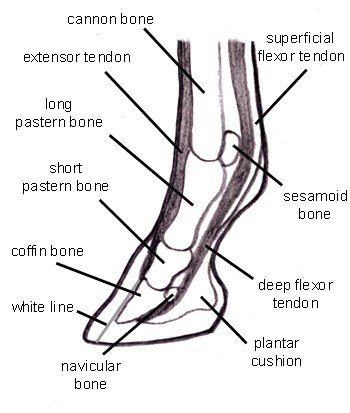
See horse hoof anatomy inside and out for a better understanding of your horse's feet.
True Horse Stories
Check out these fun true horse stories! Read about real life adventures on horseback.
First Horse
Are you thinking about getting your First Horse? Wondering what it cost to own one? Get the information you're looking for!
